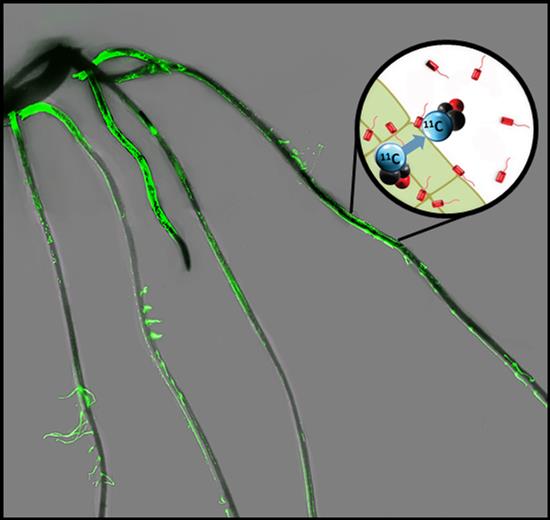Understanding the inter-kingdom relationship between plants and the microorganisms in the soil is essential for meeting future agricultural challenges in global food security. Plants harness the energy of the sun, assimilate atmospheric carbon dioxide, and chemically transform it into organic substrates. These compounds travel through the plant to its roots where they provide an essential food resource in support of the microcosm below-ground. In turn, many of these microorganisms can have beneficial effects on plant growth. Use of radioisotopes produced at MURR now offers unique opportunities to image this dynamic relationship both within plants and between the microorganisms in soils. By adapting nuclear and optical imaging technologies, MURR researchers are now able to measure microbial assimilation of plant-borne carbon, something that has been lacking to scientists, allowing them to identify conditions that promote optimal plant-microbe symbioses.
Waller, S.; Wilder, S.L.; Schueller, M.J.; Housh, A.B.; Ferrieri, R.A. Quantifying Plant-Borne Carbon Assimilation by Root-Associating Bacteria. Microorganisms 2020, 8, 700.
